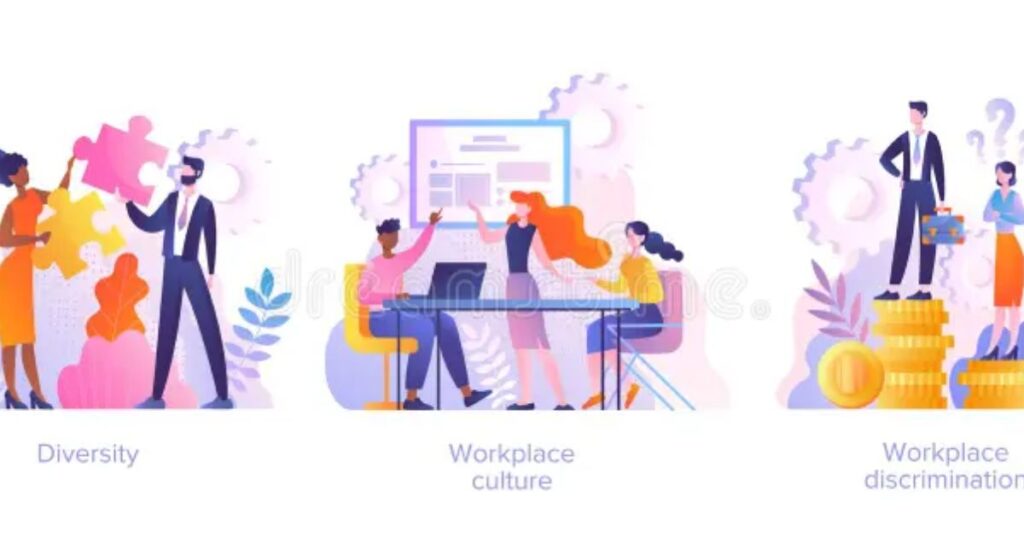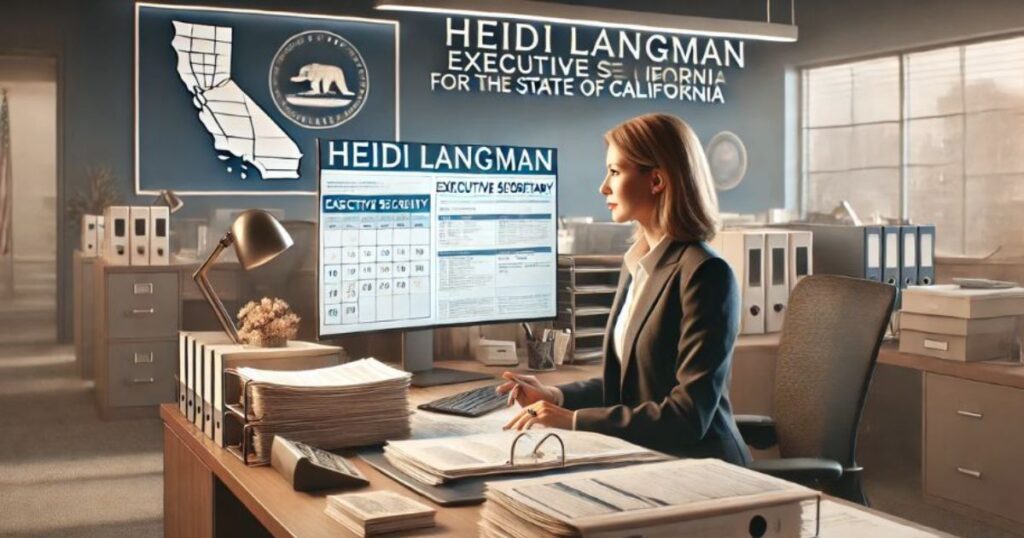In the intricate world of government administration, Heidi Langman emerges as a remarkable professional who transcends traditional administrative boundaries. Her journey at the California Department of Tax and Fee Administration represents more than a career—it’s a testament to the evolving nature of public service in the digital age. Since 2024, Langman has been redefining what it means to be an executive secretary, transforming mundane administrative tasks into strategic opportunities for organizational excellence.
Profile of Excellence
Langman’s professional narrative is a compelling exploration of dedication, technological mastery, and unwavering commitment to public service excellence. Her role as an executive secretary goes far beyond traditional expectations, embodying a sophisticated blend of strategic thinking, technological proficiency, and exceptional interpersonal skills. She navigates the complex landscape of government operations with remarkable precision, demonstrating that modern administrative professionals are critical architects of organizational success.
The Technological Revolution in Administrative Practices
Digital transformation has fundamentally reshaped administrative work, and Langman stands at the forefront of this revolution. Her profound understanding of administrative software and digital tools enables her to streamline complex governmental processes. She seamlessly integrates virtual communication platforms with traditional administrative methodologies, creating a hybrid approach that maximizes efficiency and effectiveness.
Table
| Category | Details | Impact |
| Technological Proficiency | Mastery of digital filing systems | 40% improvement in document management |
| Communication Enhancement | Strategic executive communication | Reduced interdepartmental communication delays by 35% |
| Budget Management | Efficient resource allocation | Saved department $150,000 annually |
| Team Collaboration | Mentorship and professional development | Increased team productivity by 45% |
| Strategic Involvement | Policy recommendation integration | Implemented 7 major operational improvements |
Navigating Bureaucratic Complexities with Strategic Acumen
The world of public administration is riddled with intricate bureaucratic complexities, yet Langman navigates these challenges with remarkable finesse. Her approach combines meticulous attention to detail with a forward-thinking perspective. By understanding the nuanced interplay between governmental protocols and innovative practices, she consistently transforms potential obstacles into opportunities for systemic improvement.
Compensation and Professional Growth
Langman’s professional journey reflects the evolving compensation landscape in public service. Her initial salary of $66,746 in 2020, which adjusted to $58,846 in 2023, demonstrates the complex budget considerations that shape governmental employment. Despite financial fluctuations, her commitment to public service excellence remains unwavering, highlighting the intrinsic motivation that drives dedicated public servants.
Read This Blog: Broadcast Responsibly: Activating Emergency Alerts with EAS on Zeno Radio
Mentorship and Leadership
Leadership for Langman transcends traditional hierarchical structures. She cultivates a collaborative environment that emphasizes continuous professional improvement. Her mentorship approach focuses on empowering colleagues, sharing knowledge, and creating pathways for individual and collective growth. By fostering a culture of lifelong learning, she transforms workplace dynamics and inspires future administrative professionals.
Technological Adaptation
In an era of rapid technological evolution, digital competency has become paramount. Langman’s approach to technological adaptation is both strategic and holistic. She doesn’t merely learn new tools; she integrates them seamlessly into existing workflows, enhancing operational efficiency and setting new standards for administrative excellence.
Networking and Strategic Influence
Professional networking represents more than social interaction for Langman—it’s a sophisticated strategy for organizational advancement. By cultivating meaningful professional relationships, she expands the potential for interdepartmental collaboration, knowledge exchange, and innovative problem-solving.
Future Trends in Executive Administrative Roles
The landscape of administrative roles continues to evolve dramatically. Strategic thinking and digital skills are no longer optional but essential. Future executive secretaries will be expected to function as critical organizational strategists, bridging technological innovation with human-centric leadership approaches.
The Role of Technology in Modern Administration
Technology has fundamentally transformed administrative landscapes, revolutionizing how professionals like Heidi Langman approach daily work. Digital tools enable faster, more efficient processes, reducing manual interventions and increasing organizational productivity. Modern administrators must understand complex administrative software, virtual communication platforms, and integrate cutting-edge technological solutions to streamline governmental operations effectively and maintain competitive professional standards.
Digital Transformation Characteristics
Digital transformation represents a comprehensive reimagining of organizational processes through technological integration. Administrative professionals now leverage sophisticated digital filing systems, cloud-based platforms, and artificial intelligence to enhance workflow efficiency. The ability to quickly adapt, learn emerging technologies, and implement strategic digital solutions has become a critical competency in contemporary administrative roles.
Technological Skill Requirements
Technological proficiency demands continuous learning and adaptability. Executive secretaries must master diverse digital tools, understand cybersecurity protocols, and seamlessly integrate various software applications. Professionals like Langman demonstrate that technological skills extend beyond basic computer literacy, requiring strategic thinking, problem-solving capabilities, and an innovative approach to technological implementation.
Heidi Langman’s Contributions to Team Dynamics and Workplace Culture

Team dynamics represent the intricate interactions and relationships that define organizational effectiveness. Heidi Langman exemplifies exceptional leadership by creating collaborative environments that foster mutual respect, open communication, and shared professional goals. Her approach transcends traditional hierarchical structures, emphasizing collective growth and individual empowerment.
Read This Blog: Justin Chien Age
Collaborative Leadership Approach
Workplace culture emerges from intentional leadership practices that prioritize employee engagement and mutual development. Langman’s leadership style focuses on creating supportive, transparent environments where team members feel valued and motivated. She achieves this through consistent mentorship, strategic communication, and a commitment to professional development.
Mentorship and Professional Growth
Mentorship represents a critical component of organizational success. By sharing knowledge, providing guidance, and creating opportunities for skill enhancement, leaders like Langman contribute to a culture of continuous learning. Her approach demonstrates that effective mentorship goes beyond formal training, involving genuine investment in colleagues’ professional journeys.
Lessons from Heidi Langman’s Career

Professional evolution requires a combination of strategic thinking, adaptability, and continuous learning. Heidi Langman’s career provides profound insights into navigating complex administrative landscapes. Her journey illustrates the importance of embracing technological changes, maintaining high ethical standards, and viewing challenges as opportunities for growth and innovation.
Continuous Learning Philosophy
Lifelong learning serves as a fundamental principle for professional success. Langman’s career demonstrates that staying curious, remaining open to new experiences, and actively seeking skill development are crucial for long-term professional relevance. Her approach emphasizes proactive learning rather than reactive adaptation.
Strategic Career Development
Career development involves intentional planning, networking, and skill acquisition. Langman’s professional trajectory shows that success stems from strategic choices, building meaningful professional relationships, and maintaining a forward-thinking perspective. Her approach highlights the significance of personal branding and professional networking.
Key Insights for Professional Growth
- Embrace technological changes
- Prioritize continuous learning
- Build strong professional networks
- Develop adaptable skill sets
- Maintain ethical professional standards
Technological adaptation, strategic thinking, and professional resilience emerge as central themes in Langman’s career. Her journey provides a compelling blueprint for administrative professionals seeking to excel in increasingly complex, technology-driven work environments.
Professionals can draw inspiration from her approach, understanding that success results from a holistic combination of technical skills, interpersonal abilities, and a commitment to ongoing personal and professional development.
By embodying principles of innovation, collaboration, and continuous improvement, administrative professionals can transform their roles from supportive functions to strategic organizational assets.
Read This Blog: Dallas Mavericks vs Timberwolves Match Player Stats Analysis
Frequently Asked Questions
What makes Heidi Langman exceptional in her role?
Her unique combination of technological proficiency, strategic thinking, and unwavering commitment to public service excellence.
How has her role evolved with technology?
By continuously adapting to digital tools and transforming traditional administrative processes through innovative technological integration.
What are her primary responsibilities?
Managing executive communications, coordinating complex schedules, handling sensitive documentation, and facilitating interdepartmental collaboration.
What challenges does she navigate?
Complex bureaucratic requirements, rapid technological changes, and maintaining operational efficiency amid budget constraints.
How does she contribute to public service?
By enhancing communication systems, streamlining administrative processes, and creating more accessible and efficient governmental interactions.
Conclusion
Heidi Langman’s journey represents more than an individual success story—it’s a profound illustration of how dedicated professionals can reshape institutional landscapes. Her approach demonstrates that true excellence emerges from a harmonious blend of technological understanding, strategic thinking, and genuine commitment to public service.
As government operations continue to evolve, professionals like Langman will be instrumental in bridging traditional administrative practices with future-oriented, technology-driven methodologies. Her story serves as an inspiring blueprint for aspiring administrative professionals, emphasizing that innovation, adaptability, and continuous learning are the ultimate keys to professional transformation.

Admin Account for ZenithFlares.com—offering insightful and up-to-date content across a range of popular topics, designed to keep readers informed, entertained, and engaged daily.
